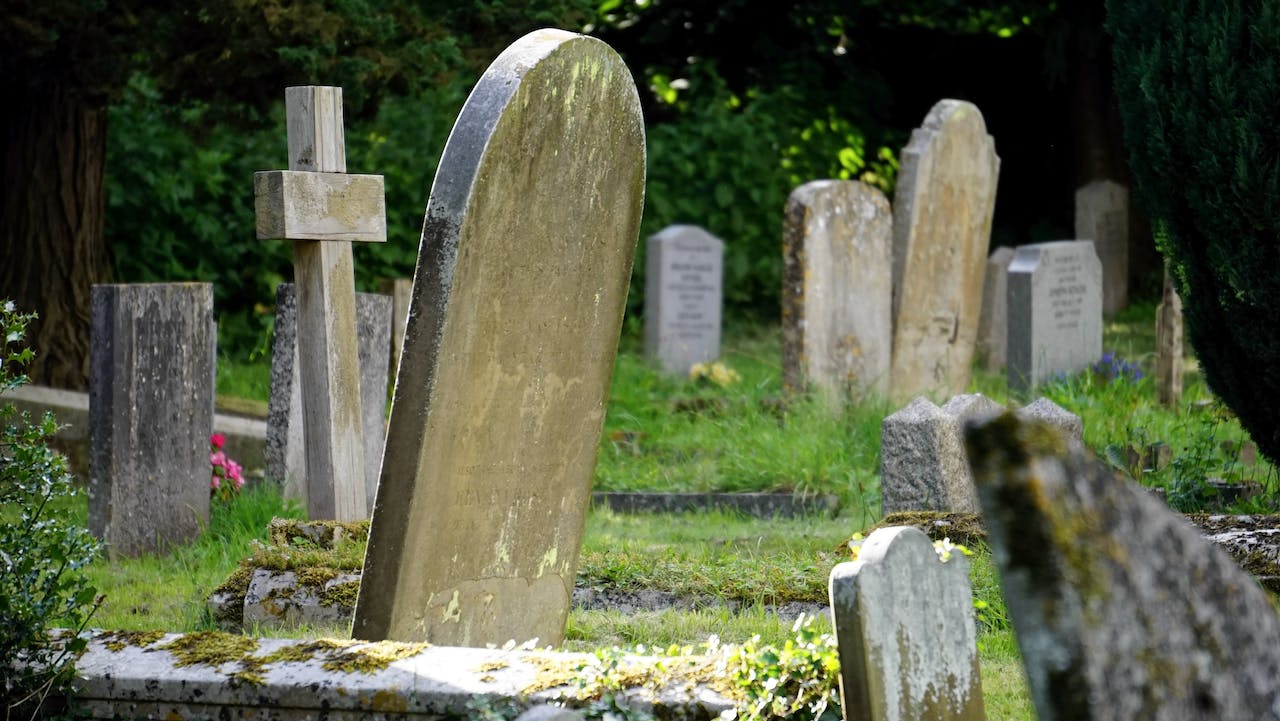February 11, 2024
According to one expert, many cemeteries have been displaced or erased by urban development, especially cemeteries where Black people were buried.
The burial grounds of enslaved people have become something that more and more people are paying attention to.
When Rachel Peric and Nadine Chapman discovered a plantation gravesite in Montgomery County, Maryland, that the county had largely ignored, they decided to ensure the community learned about it. Their attempts to get the site recognized led to a series of lectures from the Chevy Chase Historical Society that highlighted the history of the Chevy Chase area. The first of those lectures focused on the Rollingwood Burial Ground for Enslaved People, which is the burial ground that Peric and Chapman rediscovered. Renata Lisowski, the director of the society’s Archive and Research Center, told NPR that many cemeteries have been displaced or erased by urban development, especially cemeteries where Black people were buried.
“Many have been erased by urban development, especially Black cemeteries — for one, there were no headstones put in place in the 19th century for enslaved people,” Lisowski also says that there are also “known unknowns,” “Who were these people that got buried there? We don’t have their names. They didn’t record the names of enslaved people in the census. They only record the individual’s sex and their age.”
Peric and Chapman are among a growing number of people trying to bring attention to grave sites for formerly enslaved African Americans.
In 2020, after Pastor Michelle Thomas’ 16-year-old son Fitz died in a drowning accident, she laid him to rest in a cemetery that she had been fighting to restore, the Slave Cemetery located on the Belmont Plantation. Thomas told NPR, “My son is the first African American person who was born free to be buried in this cemetery,” Thomas said. “He brings the message of freedom to the ancestors that eventually, we made it to the other side.”
While researching county records in 2015 specifically to avoid building her church, Holy and Whole Life Changing Ministries, on burial grounds, she discovered the Belmont Plantation listing. She also found that despite extensive listings, more was needed by the county to establish it as a place of historical significance. Thomas told NPR, “What was more deplorable is that information existed,” she said. “All that paperwork existed, we just had no one that was interested or demanding that this history be told.”
In Florida, Antoinette Jackson, a professor and chair of the Department of Anthropology at the University of South Florida, created the African American Burial Ground and Remembering Project in 2020, which focused on forgotten or erased cemeteries in the Tampa Bay area. According to Jackson, that project was the progenitor to the Black Cemetery Network, reflecting Jackson’s realization that the problem was a national one, not a local issue.
Jackson told NPR, “I realized this was a national problem, and it wasn’t just the Tampa Bay area or the Florida area. It was national.” The Black Cemetery Project has mapped out at least 140 burial sites across the country, stretching between Texas, Michigan, Massachusetts, and Vermont.
Jackson also told NPR that cemeteries are being found underneath all manner of modern amenities, from office buildings and parking lots to housing complexes. “We’re finding cemeteries under housing complexes, under office buildings, parking lots,” Jackson says, adding that the lack of protection afforded Black cemeteries as a direct result of slavery is the ultimate culprit. “It directly impacted Black people’s ability to sustain the centers and the burial practices and sacred sites.”
Jackson also says that things are changing because people look around at their communities and get involved. “That is the big story,” Jackson said. “People are looking around where they live and go, ‘Wait a minute, I see that.’ And they start to research their own communities, looking at historical records, maps, land deeds.”
As it relates to Chapman and Peric, their efforts will bear fruit later on this year, after the pair selected a park in the neighborhood, which the county has approved, to honor the people buried in the Rollingwood cemetery. The duo is working with the Maryland-National Capital Park and Planning Commission to place signage describing what happened at the cemetery. According to Chapman and Peric, the Rollingwood Burial Ground for Enslaved People will no longer be buried and forgotten history, the people who were buried in the cemetery will now be remembered forever.
RELATED CONTENT: Penn Museum Reinters 19 Black Philadelphians Previously Held In Its Storeroom For 2 Centuries
Enter your Email Address below to get our fun-filled Newsletter!
© 2024 Black Enterprise. All Rights Reserved.

